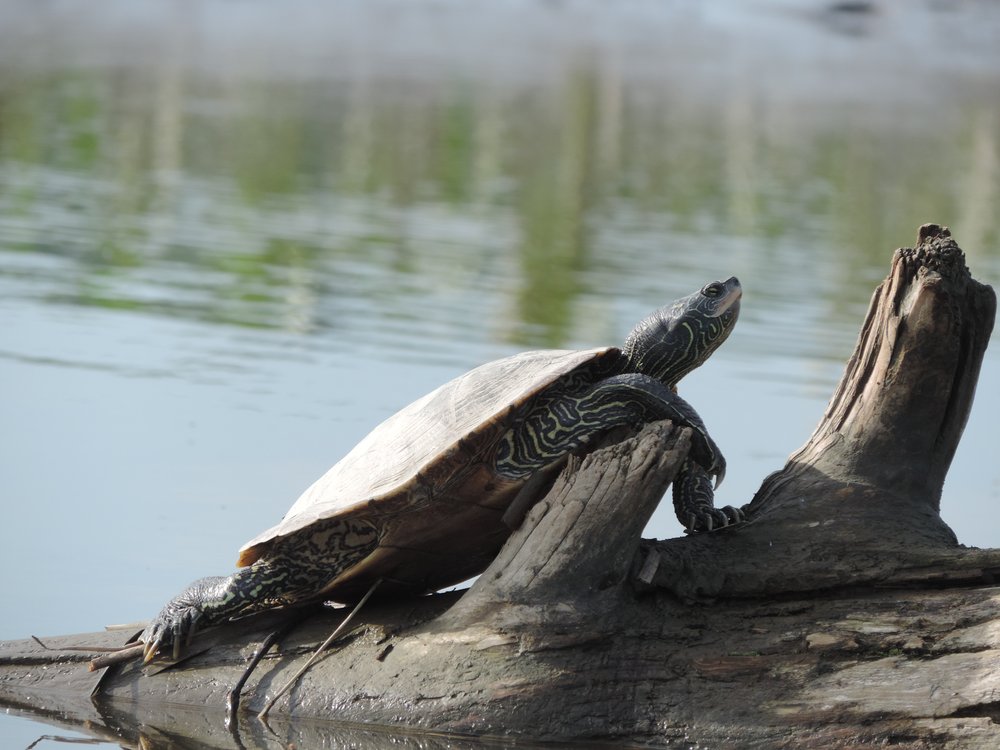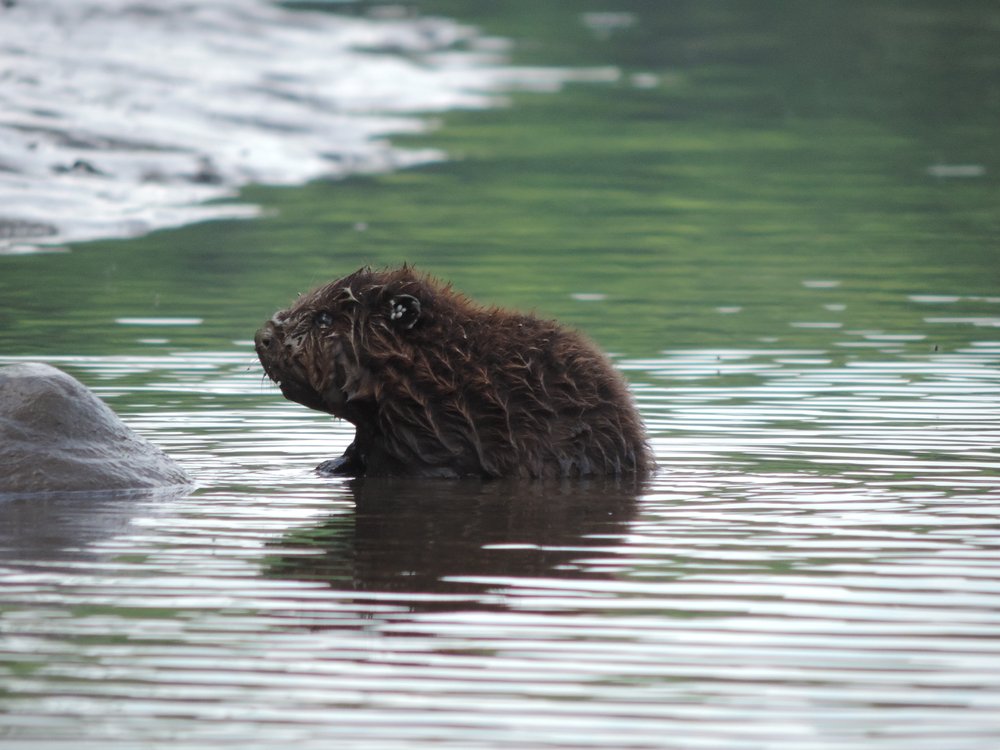 Horned GrebeI am an optimist. But on Tuesday morning as I launched my kayak onto the Hudson River at 7:30 in the morning I was not filled with my usual sense that just around the corner was the next glorious sight. I wouldn't say I was feeling pessimistic, but rather more grumpy. And I was grumpy because the height of migration has passed--it comes and goes so quickly it is excruciating. I decided that nothing special could come my way ("all the best birds are gone" I said to a friend, sounding like a twelve year old having a tantrum). Armed with this bad attitude, I stroked south under a bluing sky toward Magdalen Island and the entrance to the North Tivoli Bay.
Horned GrebeI am an optimist. But on Tuesday morning as I launched my kayak onto the Hudson River at 7:30 in the morning I was not filled with my usual sense that just around the corner was the next glorious sight. I wouldn't say I was feeling pessimistic, but rather more grumpy. And I was grumpy because the height of migration has passed--it comes and goes so quickly it is excruciating. I decided that nothing special could come my way ("all the best birds are gone" I said to a friend, sounding like a twelve year old having a tantrum). Armed with this bad attitude, I stroked south under a bluing sky toward Magdalen Island and the entrance to the North Tivoli Bay.
 Map TurtleJust to prove me wrong, the river first offered up a Horned Grebe, in elegant breeding plumage, floating placidly at the opening to the North Tivoli Bay. It bobbed along, as if it belonged there (it doesn't--it should be in Canada somewhere far north). I scooted down the main waterway, lined by cattails and phragmites. Red winged blackbirds sang their insistent conkla-dee, and marsh wrens trilled from the reeds. A Map turtle sunned on a log. Two Canada Geese crossed the channel, three babies trailing behind. Fifty yards later, a Mallard mother scooted thirteen young into the reeds. I couldn't help but laugh at myself. This was the most glorious day.
Map TurtleJust to prove me wrong, the river first offered up a Horned Grebe, in elegant breeding plumage, floating placidly at the opening to the North Tivoli Bay. It bobbed along, as if it belonged there (it doesn't--it should be in Canada somewhere far north). I scooted down the main waterway, lined by cattails and phragmites. Red winged blackbirds sang their insistent conkla-dee, and marsh wrens trilled from the reeds. A Map turtle sunned on a log. Two Canada Geese crossed the channel, three babies trailing behind. Fifty yards later, a Mallard mother scooted thirteen young into the reeds. I couldn't help but laugh at myself. This was the most glorious day.
In the distance, I saw the tell-tale V of a beaver plowing through the water. In 1840, the beaver was a rare animal in New York State. Trapping had all but wiped out this large rodent, whose pelts were used for hats and coats. When trapping was finally prohibited in 1895, some claim there were but 10 left in the State. In the North Tivoli Bay, it is hard to believe this desperate history: I always see a beaver. Or rather, I hear a slap of a broad tail, signaling danger before the beaver dives below the surface.
 So it came as a surprise when I spied a beaver snout moving toward me. About five feet in front of my kayak, the little beaver crawled up into the mud, and perched there, letting out a darling, but slightly heartbreaking mew. It then plunked back into the water and swam toward me, looping around my paddles and nuzzling the boat.
So it came as a surprise when I spied a beaver snout moving toward me. About five feet in front of my kayak, the little beaver crawled up into the mud, and perched there, letting out a darling, but slightly heartbreaking mew. It then plunked back into the water and swam toward me, looping around my paddles and nuzzling the boat.
I guessed it was lost. Across the channel rested a stick pile, a beaver lodge. I moved my boat to the middle of the channel thinking the little beaver might swim to me once again and this would get it closer to home. It did. And I had the foresight to turn on the video in my pocket camera. And sure enough, after it rounded the stern of my boat, the baby beaver swam off toward the lodge. Watch the video here.
Full of optimism, I paddled home.



